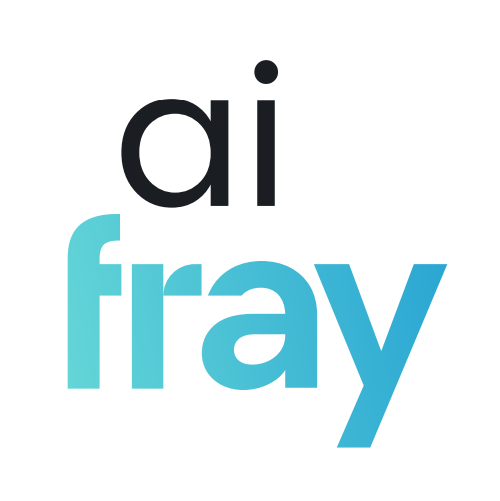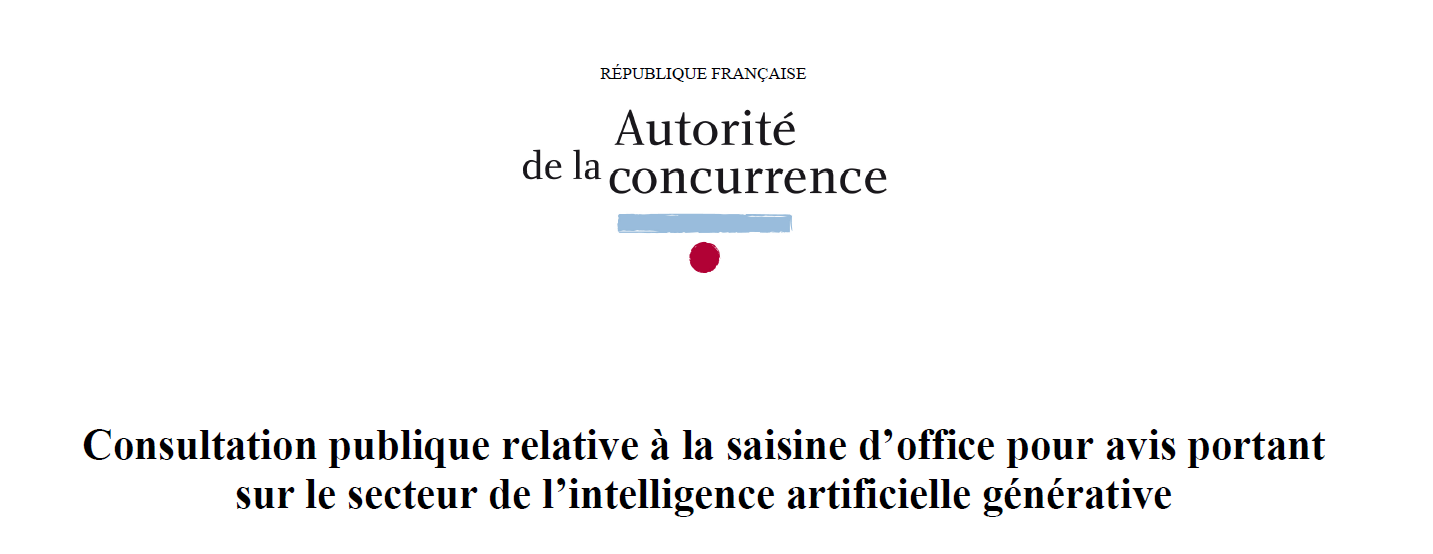Context: Competition authorities and policy makers are increasingly interested in understanding the competitive environment in Generative AI with a view to whether some large tech companies may have a fundamental advantage by virtue of certain resources and market positions. The national competition authorities of some EU member states are also taking an interest, such as in Hungary (January 7, 2024 ai fray article).
What’s new: Today, the French competition authority, named Autorité de la concurrence (Adlc), announced a public consultation, accepting input until March 22 on questions surrounding the role that the ownership of key inputs and market positions in adjacent markets play with a view to opportunities for entry into or expansion within the Generative AI market (French press release). The questions raised are similar to those discussed at a recent Federal Trade Commission event (January 26, 2024 ai fray article).
Direct impact: This is an important consultation and likely to result in an influential report. The French Adlc is often a thought leader among national competition authorities in Europe, and prepared to take on large companies over fundamental questions. France has a promising AI startup (Mistral). And the French government reportedly attempted to build a blocking minority against the EU AI Act, a legislative proposal that now appears certain to be adopted in a matter of months but which is criticized because it may have a negative impact on such companies as Mistral and on the use of Generative AI in the EU for productivity gains (February 4, 2024 ai fray article). Those factors make France a key jurisdiction in this context.
Wider ramifications: The part about cloud service providers’ investments in AI companies could also shape the Adlc’s thinking within the European Competitive Network as the European Commission may perform one or more inquiries into such partnerships.
Regulators’ questionnaires are hardly ever put together without at least some degree of a preconceived notion. It’s a positive thing when they are transparent. The Adlc’s questionnaire relating to Generative AI (GAI) is very clear about the nature of potential concerns and also about some preliminary views that the Adlc (sometimes also called “l’Autorité” (French original) or “the Autorité” (English article)) may then find to be validated by the responses or may otherwise adjust.
The Autorité cites often-heard market size estimates of 42 billion euros in 2023 (twice of the previous year) and more than 200 billion euros by 2030. In the Autorité’s observation, this new sector is now being structured around technology companies that already have a strong presence in adjacent markets, including (but not limited to) cloud services. In the coming months, the Autorité seeks to further develop its understsanding of the dynamics in that rapidly-evolving space and will then publish an “avis”, which in this case means a report laying out its views and presumably also some recommendations or enforcement priorities.
The Autorité expresses a concern over large tech companies consolidating their market power by leveraging their position in the GAI value chain or capitalizing on such a position for the purpose of strengthening their own positions in GAI.
The Autorité always names cloud services first in the context of strategic advantages that large players may have, but also mentions data and the ability to recruit skilled workers. Those three keywords actually reflect how competition enforcement has evolved. The first one is a service and undoubtedly used to power a lot of (though by far not all) AI applications. That would be a traditional input market. It’s also not a totally new thing to view data as markets, but there has been more of a focus on data in recent years, in some cases treating data almost as the same market share indicator as revenues or user numbers. And increasingly there’s an interest in labor market issues, though more from the angle of how to maximize opportunities for skilled workers. Here it sounds more like a concentration concern.
The Autorité’s questions reflect that the people who crafted them have already obtained and digested a fair amount of information. While they don’t (as they don’t have to) say so specifically, it’s obvious they’ve particularly studied documents provided by other regulatory authorities around the globe and presumably also from the debate over the EU AI Act.
The first key ingredient of GAI that the questionnaire focuses on is computing power. The Autorité wants to learn about the viability of on-premises infrastructure and then wants to know about the competitive advantages of using cloud services or partnering with a cloud service provider. France has a certain open-source-friendly history, and the question about essential services needed to train foundation models distinguishes between proprietary and open-source options for (by way of example) data warehousing, vector databases or cloud computing instances optimized for GAI.
The essentiality of graphics processing units also comes up (just like at the recent FTC event, where a lot of the concern appeared to relate to Nvidia’s market power).
The part about training data is more general and brief. Here, the Autorité is wondering whether there could be competitive advantages for those who have market power in adjacent markets.
There’s only one general question about the ability to recruit engineering and other technical talent.
After the parts relating to the key inputs the Autorité has identified, the questionnaire turns to barriers to market entry or expansion. With a view to foundation models and data, there’s an indication that the Autorité is at least interested in (even if maybe not yet convinced of) the potential of open-source software and open-access data to level the playing field.
Another approach to level the playing field that the Autorité is interested in is “lean foundation models” using less data and requiring less computing power.
One question is specifically about GAI market actors in France and whether there’s any unique characteristic of the French market.
The Autorité doesn’t provide a specific example, but wants to know if there any issues arising from exclusive dealings, refusals to deal or contract clauses (they must mean non-compete clauses) that make it difficult to bring GAI-skilled technical staff on board.
With a view to the Autorité’s cloud market report of last year, the question is asked whether interoperability limitations discouraging migration from one service to another also affect cloud-hosted foundation models.
The Autorité is interested in potentially anticompetitive and lock-in effects resulting from minority stakes that major players take in smaller GAI companies, and raises the question of whether existing merger control rules are sufficient. The latter might mean that the Autorité will at some point propose legislative measures, be it at the EU level of just for France, to give antitrust authorities the ability to investigate transactions even if they fail to meet the traditional criteria for merger reviews.
The final part is basically about where respondents see the market go over the next five years, what ideas they may have to foster competition in that space and about whether certain existing EU regulations (Digital Market Act (DMA) or Data Act) will have a pro-competitive effect on AI. While ai fray hasn’t had a reason to comment on the DMA so far, its sister publication games fray covers digital gatekeeper issues (which have implications far beyond games) and regularly talks about concerns that the DMA may not require a powerful player like Apple to open up a market (February 2, 2024 games fray article). Mobile app store issues are not the first aspect of digital market regulation that comes to mind in connection with GAI, but the related lessons are instructive.
One of the questions in the final section relates to whether one deployment method for foundation models (applications, application programming interfaces, marketplaces, plugins, open models, platforms etc.) will have an advantage in the future and what that means for competition in the field.
When there is further information from the French consultation, ai fray will comment again.

